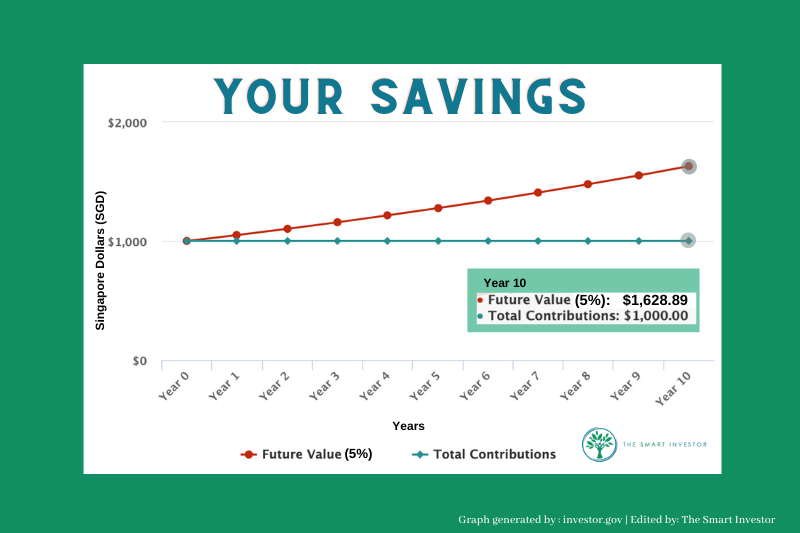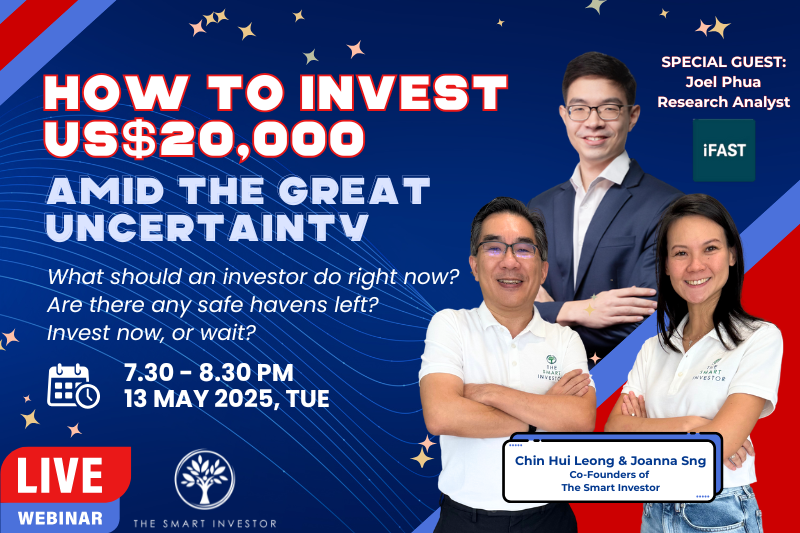Imagine a snowball rolling downhill.
As it gains momentum, the ball gets bigger and bigger.
This is exactly how compounding works.
In the investing world, the “snowball effect” describes how a small sum of cash can turn into a much larger amount over time.
What is compounding?
Picture this. You and your friend each have 1,000 dollars deposited in a bank account.
The account returns an interest of 5% a year.
Your friend decides to withdraw the interest every year for 10 years while you decide to keep your thousand dollars in the bank for the same period of time.
Your friend will earn S$50 interest every year. By the end of 10 years, he or she would have accumulated S$500 in interest.
Assuming this sum was reinvested instead of withdrawn, here’s how much you have earned over the same period of time.
After 10 years, you would have earned S$628.89 and ended up with a total of S$1,628.89.

Of course, in reality, no bank account will provide you a 5% return every year.
However, the above is an illustration of the effects of compound interest.
Just by reinvesting the interest, you can grow your money at a much quicker rate.
Compounding is a process where you reinvest the earnings from your assets, allowing your investment sum to increase exponentially.
“Earnings” in this case refers to capital gains and dividends.
So, the next time you receive your dividend payout, why not consider reinvesting it?.
The rule of 72
The rule of 72 is a simple way to approximate how long it takes for you to double your money.
All you need to do is to take the number 72 and divide it by the interest rate.
The number you get is a rough indication of the number of years it will take to double your money.
For example, imagine you have S$5,000 in your bank account earning 3% interest.
The number of years taken for your bank account to reach $10,000 would simply be 72/3, or 24 years.
If your bank account provides an interest rate of 4%, the number of years taken to double your money would then decrease to 18 years (72/4).
Thus, this magic rule shows how a small difference in the interest rate can result in a significant reduction in the number of years taken to double your wealth.
Get Smart: The power of compounding
To harness the power of compounding, there are two tips you should take note of as an investor.
Firstly, you should start early.
The earlier you start investing, the more you can take advantage of time to compound your money.
Secondly, you should be wary of taking on too much risk.
Compounding only works if you generate a consistent positive return on your investments.
If risks are not managed well, it could lead to large losses if your investments go awry.
Hence, measures such as asset class and sector diversification should be taken to mitigate risk.
Don’t wait too long to start investing as the passing of each day represents a lost opportunity for compounding.
Strive to be a Smart Investor and start your investment journey as soon as you can!
Disclaimer: Jia Yi does not own any of the companies mentioned.





